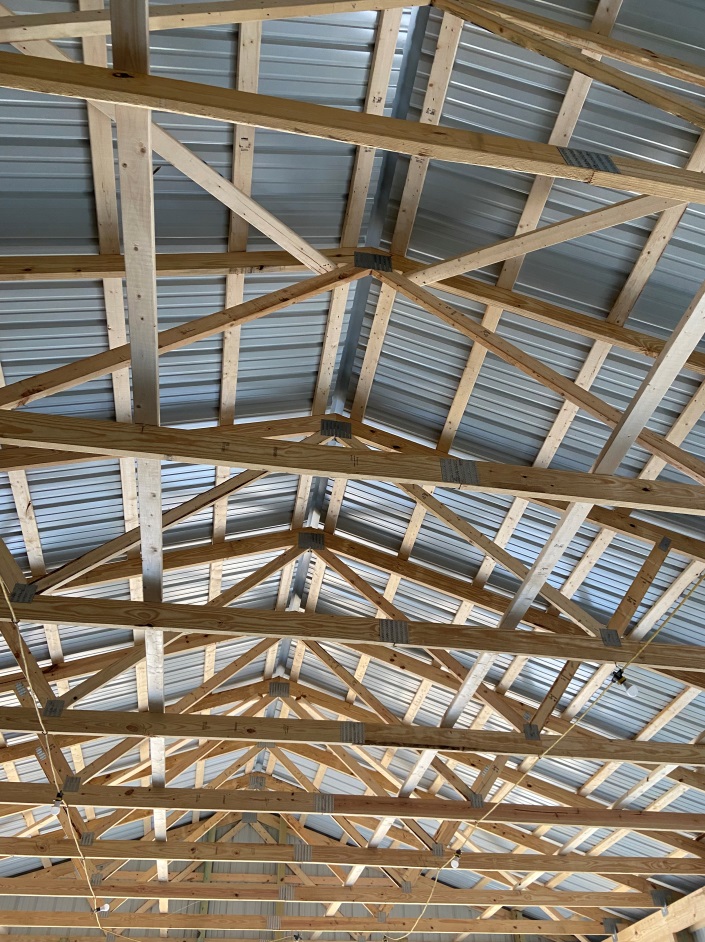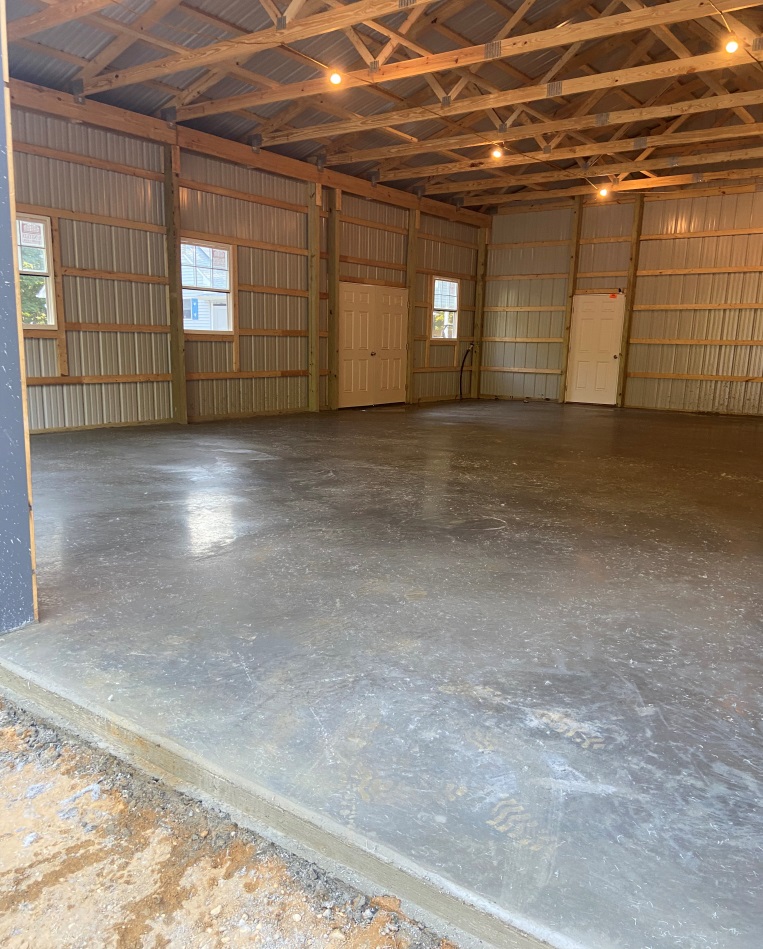How to Insulate a Post Frame Shop When No Advance Considerations Were Made
I encourage clients to give some serious advance consideration when erecting new post frame (pole) buildings to any eventuality of future climate control and a need for insulation.
Reader MAC in MILLVILLE writes:
“40 x 30 want to insulate. It will be used as a storage/workshop. I included pictures so you can see what I have. What’s the best way to insulate? I plan on doing metal ceiling liner and most likely plywood on the walls. There is no vapor barrier under the concrete either. I do have a vented ridge and soffit. I hope I provided enough information to be able to answer my question.”


Start by sealing your concrete floor – as this is going to be a moisture source you do not want inside of your new building.
Roof/ceiling – no provision has been made to prevent condensation from happening beneath your roof steel. Sadly I see this occur far too often, as builders, kit providers and local lumberyards just lack knowledge needed to be able to educate and make best recommendations to their clients. You could either (a) remove roof steel, add a method of condensation control (such as a Reflective Radiant Barrier or sheathing such as OSB or plywood with either 30# felt or a synthetic ice and water shield) and reinstall steel using new, large diameter screws. This is highly labor intensive and your roof may not have been designed to support the weight of adding sheathing.
Best solution will be to have two inches of closed cell spray foam applied to the underside of roof steel at roughly two dollars a square foot. Not an inexpensive solution when its need could have been prevented with better advice up front.
Cumberland County is in Climate Zone 4A, as such you should have a minimum of R-49 ceilings and R-20 walls. Perimeter of your slab should be insulated two feet deep with R-10.
I would dig a trench two feet deep around your building, up tight to its pressure preservative treated splash plank and install R-10 rigid board XPS insulation from the height of the top of the slab down two feet. Install a metal, cement board, or cellular PVC panel to conceal any insulation portion left exposed above grade. If cement board is used, it should be a type not reinforced with wood fibers. Install a metal cap as an insect guard to conceal the top horizontal edge of both insulation board and closure panel. Seal cap to splash plank with mastic.
Once you have a ceiling liner in place, blow in R-49 or greater thickness of fiberglass insulation.
For walls, I normally like to see a Weather Resistant Barrier (like Tyvek) between framing and siding. As you do not have this, I would use R-21 unfaced Rockwool stone wool insulation, as it is not affected by moisture. Place a well-sealed 6mil clear plastic vapor barrier over the inside of insulation prior to placing plywood on walls.






